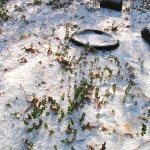
What I really like about the Skudeneshavn Primary School playground in Karmøy, Norway is the sheer variety of things available for the students to do (hat tip to Mary Cour). I also like the philosophy. Asbjørn Flemmen’s research on the social and motor skills benefits of play, true children’s play, is the key guiding principle behind the design of the playground. His philosophy is that:
Real play is a spontaneous and social activity, dependent upon its environment, where interaction takes place through extensive use of gross-motor movement. – Flemmen (2009)
Because it is spontaneous, real play is also intrinsically driven, coming from children’s innate motivation. Flemmen view of the role of grown-up’s is the same as Montessori’s, to direct the environment. He draws a clear distinction between the real play of children’s culture and the competitive sports that typify adult culture (Flemmen, 2009), where behavior is directed by the adults.
The Skudeneshavn playground embodies these principles by providing a variety of opportunity to challenge all skill levels and interests, and having materials that attract the interest of their students. Indeed, to stimulate interest, a key part of the playground design is to have “activities the children can not yet master and do not dare to do so”.

Real play also needs an environment that stimulates social interaction (again very Montessori), and Flemmen’s approach to conflict resolution is the let the kids sort it out. This is somewhat controversial, especially when you consider the possibility of bullying, yet there is some evidence that this approach works. The variety of the activities available make it so that the children are seldom bored.
Flemmen has an interesting chapter in the book, “Several Perspectives on Children’s Play: Scientific Reflections for Practitioners” (Chapter 11). I also find his table comparing children’s play to adult sports to be a very useful template for considering how to organize physical education.



